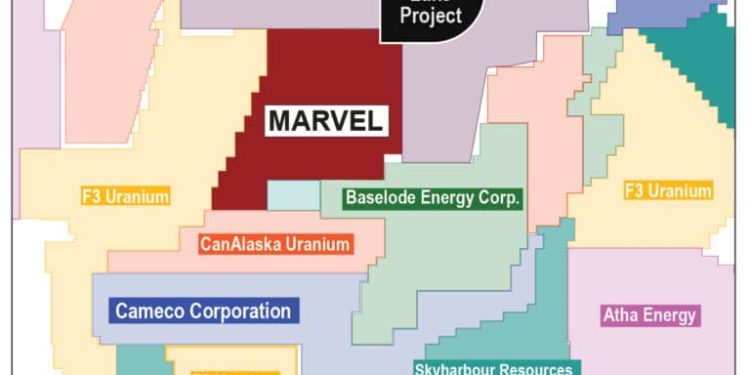Marvel Discovery Corp. (TSXV: MARV | Frankfurt: O4T | MARVF: OTCQB) has entered into an agreement to acquire the Costigan Lake Uranium project, which covers 5,518ha located on the eastern side of the Athabasca Basin.
“Marvel has completed an almost impossible task of acquiring key ground in the prolific Key Lake Corridor,” commented Marvel CEO Karim Rayani.
“The addition of the Costigan Lake Property is within the Wollaston-Mudjactic Transition Zone (WMTZ) and the Key Lake Shear Zone, which represents tremendous opportunity.”
The acquisition enhances Marvel’s land portfolio of uranium holdings at Key Lake, which is adjacent to Cameco, F3 Uranium, Skyharbour, and Abasca Resources. This acquisition increases the company’s footprint to four distinct projects covering over 23,130ha and is in line with Marvel’s aggressive approach to project generation and exploration.
Strategically located 25km southwest of Cameco’s Key Lake Mine and mill complex, it is perfectly situated along the WMTZ. The Costigan Lake project’s infrastructure is also within 8kms of a primary year-round maintained road servicing the operational Key Lake Mill.
The Costigan Lake project adjoins F3 Uranium’s (TSXV: FUU) Hobo Project who just announced a $15M investment from Denison Mines; and Abasca Resources’ (TSXV: ABA) Key Lake South Project, who just completed a 4,959 m drill programme with nine of the 11 holes intersecting anomalous uranium.
Being within the WMTZ Zone means that the project is within the same basement rocks that host all the major uranium deposits on the east side of the Athabasca Basin and is on trend with projects like Key Lake, Cigar Lake, and McArthur River.
There are several high-merit exploration targets within the WMTZ over 16km of subsurface conductors lying within a magnetic low. Additional targets include anomalous radioactive boulder trains, first discovered in 1978 by Rainbow Oil Limited. The property has limited systematic modern-day exploration, which presents blue sky potential.
The company is utilizing the same innovative techniques that have led to some of the largest discoveries in the Athabasca Basin including radon surveys, ground geophysics, underwater spectrometer analysis, and airborne radiometric surveys.
For further information, please visit: www.marveldiscovery.ca
To read more articles like this, please visit: www.theassay.com












